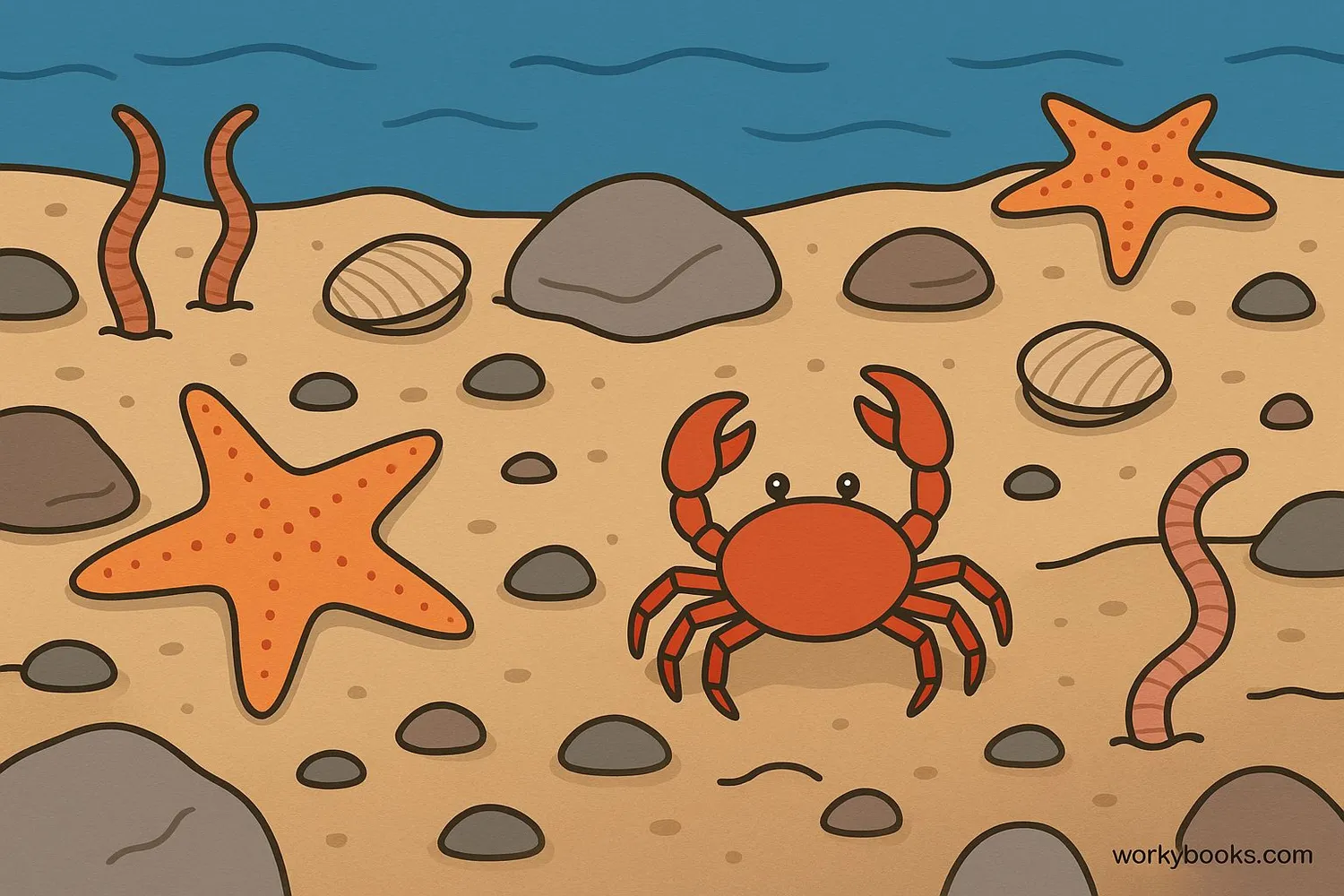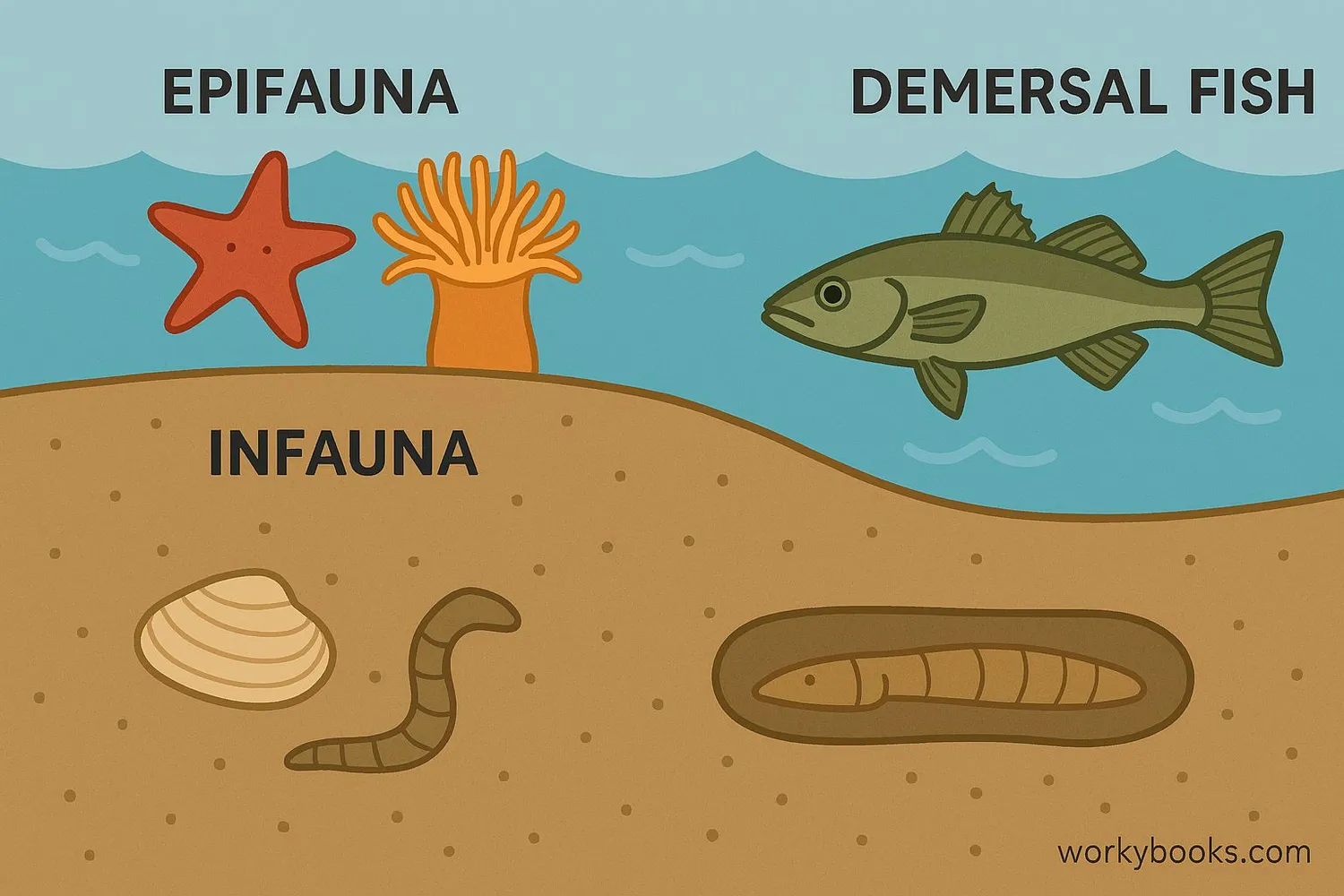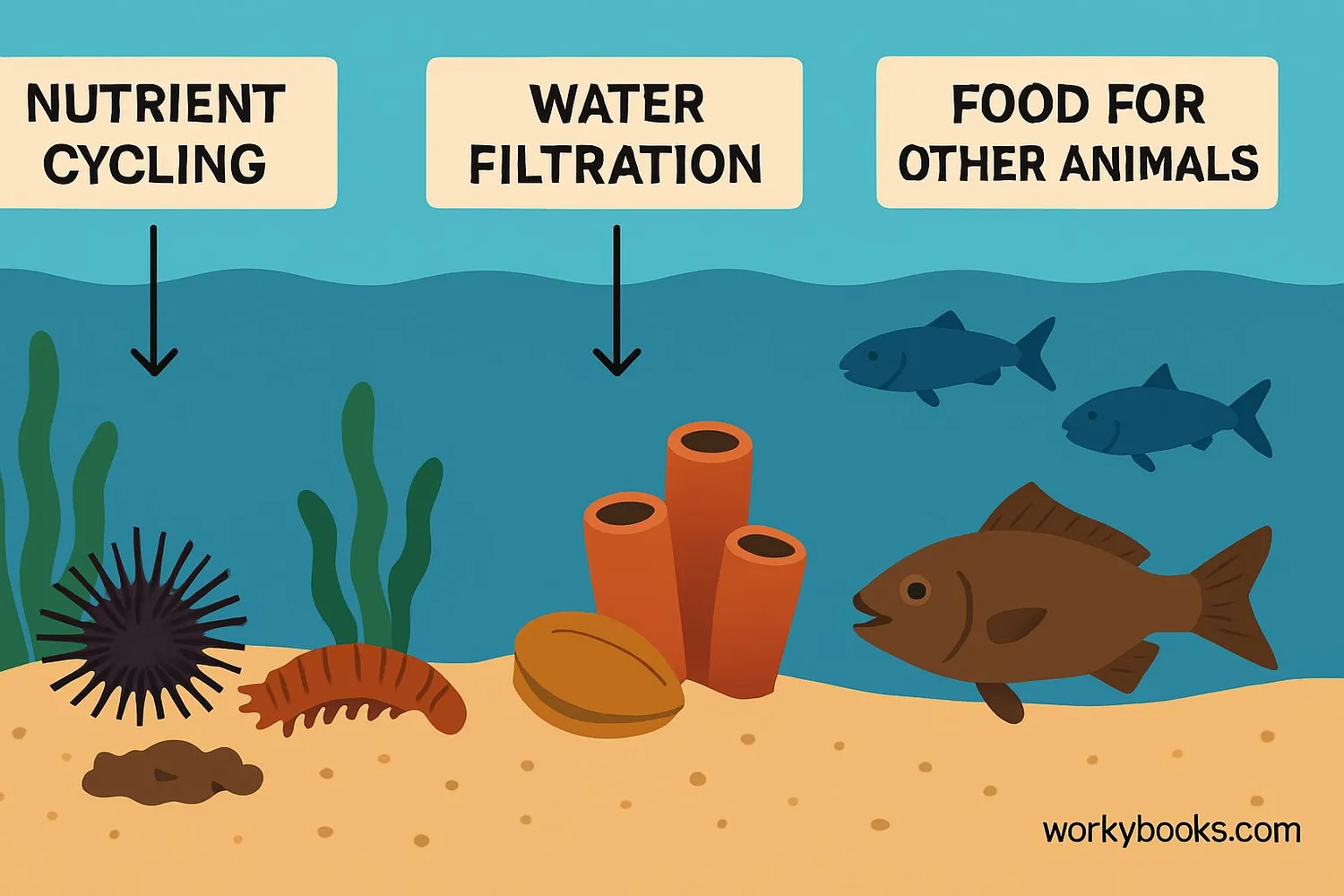Benthos - Definition, Examples, Quiz, FAQ, Trivia
Discover the fascinating organisms living at the bottom of oceans, lakes, and rivers
What is Benthos?

Benthos refers to the community of organisms that live on, in, or near the bottom of water bodies like oceans, seas, lakes, and rivers. The term comes from the Greek word "bathys" which means "deep."
These bottom-dwelling organisms live in the benthic zone, which includes the sediment surface and some sub-surface layers. Benthos can be found in all aquatic environments, from the shallowest tidal pools to the deepest parts of the ocean.
Did You Know?
The benthic zone is the ecological region at the lowest level of a body of water, including the sediment surface and some sub-surface layers.
Types of Benthic Organisms

Benthic organisms come in many different forms and can be classified in several ways:
By Size
Macrobenthos (visible to naked eye), meiobenthos (small but visible with microscope), microbenthos (microscopic)
By Habitat
Epifauna (live on surface), infauna (live within sediments), demersal (swim near bottom)
By Food Source
Filter feeders, deposit feeders, predators, scavengers
Common examples of benthic organisms include:
• Invertebrates: clams, oysters, sea stars, crabs, lobsters, sea anemones, worms
• Fish: flounder, halibut, cod, skate
• Plants: sea grasses, algae
• Microorganisms: bacteria, archaea
Adaptation Note
Many benthic organisms have special adaptations for life on the bottom. Flatfish like flounder have both eyes on one side of their head so they can lie flat on the ocean floor!
Importance of Benthic Organisms

Benthic organisms play vital roles in aquatic ecosystems:
Nutrient Cycling
Benthic organisms help recycle nutrients by breaking down organic matter that sinks to the bottom
Water Filtration
Filter feeders like clams and oysters help keep water clean by removing particles
Food Web Base
Many benthic organisms serve as food for larger animals like fish, birds, and mammals
Benthic communities are also important indicators of ecosystem health. Scientists study them to:
• Monitor water quality and pollution levels
• Assess the impact of human activities like fishing or dredging
• Understand how climate change affects marine environments
• Track the recovery of ecosystems after disturbances
Environmental Indicators
Because benthic organisms are relatively stationary and respond to environmental changes, they are excellent indicators of ecosystem health and water quality.
Benthos Knowledge Check
Test your knowledge about benthic organisms with this quiz. Answer all 5 questions to see how much you've learned.
Frequently Asked Questions
Here are answers to some common questions about benthos:
Amazing Benthos Facts
Discover some fascinating facts about benthic organisms:
Deep Sea Giants
The largest benthic invertebrate is the giant squid, which can grow up to 43 feet long! These mysterious creatures live in the deep ocean and are rarely seen alive.
Record Lifespans
Some benthic organisms have extremely long lives. The ocean quahog clam can live for over 500 years, making it one of the longest-living animals on Earth!
Extreme Living
Some benthic bacteria live near hydrothermal vents where temperatures can exceed 700°F (371°C)! These extremophiles use chemicals from the vents for energy instead of sunlight.
Biodiversity Hotspots
Coral reefs, which are benthic environments, cover less than 1% of the ocean floor but are home to about 25% of all marine species!


